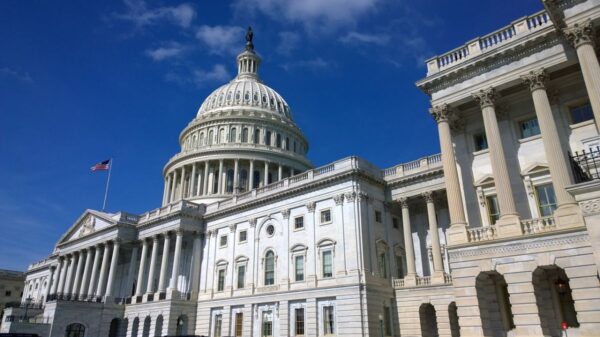
Last month, Kairis Joy Colter-Chiaji’s 26-year-old daughter lost her father to cancer. He decided not to get treatment because he was uninsured.
“He didn’t want to leave that debt for his children. Now, you’ve got these 20-somethings who are grieving the loss of their father who, to protect them from that, didn’t tell them about his illness for a long time,” Colter-Chiaji said.
“I think that’s the pinnacle of what happens when you don’t have insurance, and you have to make those kinds of choices, where taking care of yourself is not an option.”
In 2022, 52% of Californians reported skipping or delaying health care due to cost in the past 12 months, according to a survey conducted by the California Health Care Foundation (CHCF) and NORC at the University of Chicago, a nonpartisan research organization.
More than 100 million people in the U.S. have medical debt, 41% of whom are adults, an investigation by KHN and NPR found.
Medical debt can spring up suddenly and can happen when a patient is unable to pay for services from an emergency room visit, health care provider or ambulance/paramedics. While medical debt can range from a few hundred dollars to thousands, the unexpected costs can weigh down individuals.
The CHCF survey found that more than one in three Californians — 36% — reported having medical debt, and of those, one in five (19%) report owing $5,000 or more. Fifty-two percent of residents with lower incomes are more likely than those with higher incomes (30%) to report medical debt.
The burden of medical debt
The burden of having medical debt can impede every aspect of a patient’s life including health, housing, work, finances and their family. Medical debt can severely impact an individual’s credit if they open a health care related credit card to shoulder the costs of medical expenses, or if their debt goes into collections.
The Consumer Financial Protection Bureau reported that $88 billion of remaining medical bills are currently in collections which affects one in five Americans.
Earlier this month, the Biden administration announced plans to lower health care costs, unfair medical debt and protect patients from surprise medical bills.
But many Americans still hold past medical debt.
According to a data dashboard launched by the Urban Institute which measured credit health during the COVID-19 pandemic, the average amount of medical debt in California was $1,838 in August 2021. In communities of color, the average debt totalled $1,846, higher than both the state average and the average debt in majority white communities ($1,695).
In San Bernardino County, 10.5% of the population had medical debt in collections that averaged $1,935. In Riverside County, 9.6% of the population had medical debt in collections that averaged $2,145.

While some patients opt to delay or skip treatment or see a provider due to copays and associated costs, others make tough decisions to pay out of pocket in order to pursue their best health care options.
Jasmine Creighton, a program coordinator of maternal and reproductive health at California Black Women’s Health Project (CABWHP), shared that while she had good health insurance, the company was selective about what birthing professionals they would cover.
During the midst of the COVID-19 pandemic, Creighton was pregnant with her second child. She sought to give birth outside of a hospital setting, so she looked at birthing centers and Black midwives available under her insurance plan. The midwife that Creighton and her husband chose was out-of-network, and therefore not covered by their insurance.
A midwife is a medically trained health professional who supports birthing people with pregnancy, childbirth, newborn care and postpartum health.
“That left us with a decision to make: Do we go through the insurance and go through who’s available? Or, do we try to get some money together to pay out-of-pocket?” Creighton asked. “We decided to go with the latter. It was a significant cost, but my husband valued my life as well as I did. We had to make ends meet.”
A Journal of the American Medical Association (JAMA) study released earlier this month found that across the U.S., maternal deaths have more than doubled over the last two decades (1999-2019). The most deaths occurred among Black women.
Studies have shown that Black birthing people have better outcomes when they have a midwife or doula at their side during pregnancy and birth. A doula is a person who provides physical, emotional, mental and nonmedical support for birthing people before, during and after childbirth.
But the costs of acquiring the services of a private midwife or doula can be expensive. Creighton and her husband paid more than $6,000 for midwife services including lab work, ultrasounds and other miscellaneous fees.
Yet, the cost of a birthing experience with the possibility of less complications, less medical interventions and lower rates of cesarean sections is priceless. With the growing evidence of the benefit of having a midwife or doula as part of a patient’s birthing team, states have begun to cover services under Medicaid plans.
While Medi-Cal, California’s Medicaid health program, covers midwife and now doula services, the reimbursement rates are low and aren’t sufficient as a living wage — especially in California.
Economic conflicts faced by birth workers
Colter-Chiaji has been a community doula for 24 years. As an advocate and national trainer for doulas, she works with CABWHP as an ambassador to support educating and training birth workers.
“I will tell you that 80% of the people that I served prior to a partnership with a major health care company, the last two years, could not pay fees,” Colter-Chiaji explained. “That had nothing to do with whether or not they needed support. In fact, they need more support. So, the financial burden became mine.”
After months of community stakeholders and birth workers negotiating with the Department of Health Care Services (DHCS), the state increased reimbursement rates for doulas from $450 to $1,154 for total services provided under the benefit.
Martine Wilson, a doula and midwife assistant, said that birth workers can charge more money as private businesses. The cost of hiring a doula can range from $1,000 to $5,000 in California depending on the services offered.
“When we take on Medi-Cal clients, we’re getting less money, and then the money [is] not really going to come in right away. We’re still living below the poverty line, trying to serve our moms the best we can, and we’re the ones in the deficit,” Wilson clarified. Wilson is an ambassador with CABWHP and advocates on behalf of doulas and birth workers.
“We’re holding that expense because we’re going to give the best care we can to our moms, regardless of what the system is saying.”
The Medi-Cal benefit is still new and has kinks to work out as doulas struggle to enroll in the Medi-Cal system, acquire the appropriate insurance coverage and register in billing systems required by individual insurance companies. Some of these tasks require unexpected out-of-pocket fees.
As a doula enrolling within Medi-Cal, some Health Maintenance Organizations (HMO) require liability coverage that is equivalent to those required by licensed doctors.
“My salary is not the same as a licensed doctor. I hadn’t even begun to get any sort of reimbursement, but now my liability insurance rates have gotten really pretty high,” Colter-Chiaji described.
In the meantime, community-based doulas are still providing services to those who need them, regardless if they are Medi-Cal beneficiaries or not, sometimes free of cost or with support from grant programs. Providing such labor-intensive services without the guarantee of a consistent or sustainable income weighs heavily on birth workers. While the process of enrolling in Medi-Cal is long and there’s a learning curve, Colter-Chiaji is hopeful about the gaps the benefit will eventually close as time moves forward.
“I have to figure out how to still feed my kids, how to still pay for my home, how to still have gas in the car, [and] sometimes how to feed a mama just so that she’s comfortable enough to talk to me about her situation,” Colter-Chiaji voiced.
Colter-Chiaji recalled a time when she provided care inside of hospitals as a doula and she was very careful about not tripping over a doorway or injuring herself inside the facility. She was unable to afford care in the same facility she was providing services because she didn’t have insurance at the time.
“The running joke was, I can’t afford a doula because I am one,” she commented.
Access vs. Affordability
Under the Affordable Care Act (ACA), health insurance plans are required to cover preventative services without charging patients a deductible, copayment or coinsurance in order to make healthcare more accessible. Preventative services include cancer screenings, routine immunizations and preventative services for women and children.
However, a 2021 study published in the Journal of Preventive Medicine found that Americans who had employer-sponsored insurance were still charged between “$75 million and $219 million in total for services that ought to be free to them.” Additionally, the report also noted that some enrollees were charged out-of-pocket costs for eligible preventative services.
Patients who face unexpected costs from services they believed were covered becomes a financial burden and can result in accruing medical debt. This may also lead to the inability to later afford or seek specialized services needed.
“You have individuals who are not able to get specialized care because of a lack of access to insurance that will cover certain things for them,” Wilson said. “So, the doctors will not even offer them another alternative of care if they know that their insurance is not going to cover it. So, they leave the office thinking they have no other options.”
While Medi-Cal provides health insurance for people who have no income or who are living below the poverty line, and have since extended services to residents regardless of immigration status, Chiaji-Colter said she worries about people in the gray area — those who are self-employed or entrepreneurs.
“There has to be a higher value placed on the folks who work really, really hard to be poor,” Chiaji-Colter. “It costs a lot of money to be poor in California.”
Community-based providers like Wilson and Colter-Chiaji, who are working to close the health equity gap and support underserved, vulnerable communities and Black birthing people, are themselves casualties of low compensation, limited access to health care and exorbitant medical fees making it clearer than ever that not only is health care equity about access, but it is also about affordability.









You must be logged in to post a comment Login